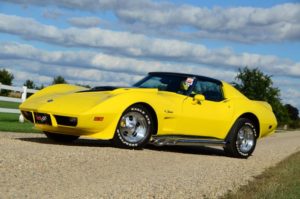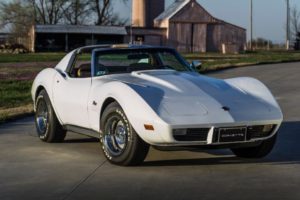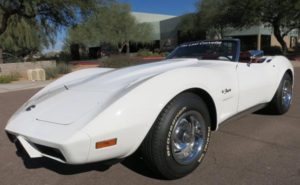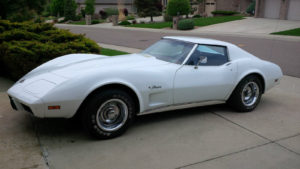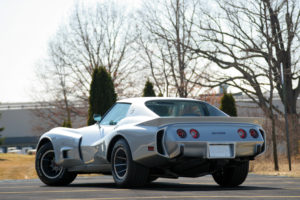The 1975 Chevy Corvette, along with the automotive industry as a whole, would experience a significant transformation at the onset of the new model year. Because of serious health issues and environmental contamination associated with the use of lead fuel, it was determined that the automotive industry would – and should – phase it out.
Tetraethyllead (also known as TTL, or simply “lead”) was introduced in the 1920s as an additive to prevent fuel from auto-igniting in high compression, internal combustion engines. While the lead additives allowed engine designers to produce more powerful, higher compression engines, it also produced a dangerous neurotoxin through exhaust emissions, which resulted in many cases of acute, and widespread lead poisoning, especially in children. Additionally, the lead component was destructive to catalytic converters, which were to become a Federally mandated requirement to aid in the control of damaging exhaust emissions.
For Chevrolet in general and the Corvette in particular, the 1975 model year marked a turning point in the car’s history. Zora Arkus-Duntov, who had been instrumental in breathing life into the Corvette, retired on January 1, 1975, after 21 years and 7 months with General Motors
Pricing: $6,810.10 (Coupe), $6,550.10 (Convertible)
Engine: 350ci – 165HP Engine (standard), 350ci – 250HP Engine
Transmission: 4-speed manual (standard), 4-speed manual (close ratio), 3-speed Turbo Hydra-Matic automatic (optional)
Top speed:
Units Produced: 38,465
Available Colors: Classic White, Silver, Bright Blue, Steel Blue, Bright Green, Bright Yellow, Medium Saddle, Orange Flame, Dark Red, Mille Miglia Red
Highlights of the year:
The 1975 Corvette look was almost identical physically to the 1974 model. The one notable change to the car’s exterior design was the introduction of a pair of front and rear bumper pads. These pads were integrated into the soft front and rear bumpers with the intent of providing the Corvette with additional protection in parking lots (and similar environments where the car might make contact with a curb, or even another vehicle.)
Beyond the introduction of these parking pads, the structure of both the front and rear bumpers were modified slightly as well. The front bumper now featured an inner honeycomb core which offered added rigidity. The rear bumper received inner shock absorbers to reduce damage in the event of an impact condition.
A significant milestone that was also represented in the 1975 model year had nothing to do with what the Corvette introduced as a new option, but rather what it was about to eliminate as a production option for nearly the next decade.
The 1975 Corvette would be the last of the third-generation Corvettes to be offered as both a coupe and a convertible. Because convertible volumes had continued to diminish year after year, Chevrolet had already considered eliminating the option, but when the government threatened to enact legislation that would have effectively banned fully open cars in the United States after the 1975 model year, it sealed the deal. The decision was made to discontinue production of a Corvette convertible and the last C3 Corvette convertible rolled off the assembly line in late July 1975.
Just as there were few changes to its appearance, there were equally few changes to the car’s mechanical and structural makeup. However, 1975 was a significant year, not only for Corvette but many production automobiles as it was the year that the catalytic converter was formally introduced and adopted by manufacturers across the United States.
As a result of the introduction of the catalytic converter, the 1975 Corvette was also the first model not to feature dual exhaust. Instead, the exhaust left both manifolds via a Y-pipe, passed through the catalytic converter, and then split again to a pair of muffler/tailpipe assemblies
Lastly, the 1975 Corvette was the final model year to feature the Astro Ventilation system which had been introduced as part of the third-generation Corvette in 1968.
Despite these minimal changes to the car, the 1975 Corvette’s sales numbers continued to rise over the previous model year.
In total, 38,465 Corvettes were sold that year, which was within 300 units of the 1969 model year, which was still – to that point in time – the best production year ever for Corvette.
Photos of the 1975 Corvette:
Sources:
https://www.corvsport.com/1975-c3-corvette/
https://www.corvsport.com/1975-c3-corvette-image-gallery/
https://wallup.net/1975-chevrolet-corvette-c3-muscle-cars-classic-6/

